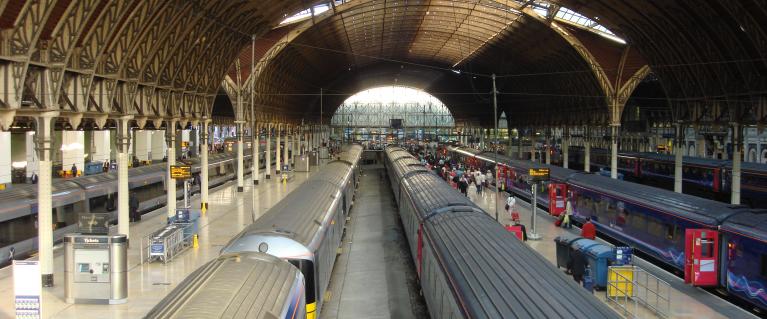
Improving London’s railways
By 2031, more than 600,000 extra passengers will need to travel by public transport at peak times, many by rail.
London Overground
Since opening in 2007, London Overground has proved Transport for London’s (TfL) ability to successfully run high capacity, reliable suburban train services. Now operating as a genuine orbital railway, the Overgroun is one of the best performing railways in the country. Over the past three years, it has consistently performed among the top rail services in terms of reliability and customer satisfaction.
The National Rail network
The National Rail network in London could provide capacity equivalent to a second Underground network, while continuing to enable longer distance travel and other services.
We are working with Network Rail to provide more trains per hour and more carriages, which could:
- Double current passenger numbers
- Reduce overcrowding
- Improve the customer experience
This will include the development of a South London Metro to ensure that no area of London is without fast, frequent and high quality Metro-style services.
HS2
HS2 is the planned high speed railway between London, the Midlands and the north of England. It’s a critical new piece of infrastructure that our country needs and the Mayor is supportive of its development.
But we also need HS2 to work for London. That’s why we’re seeking a better HS2, to enable the proposed railway to change the economic, social and environmental face of the UK.
Areas we are looking to influence and which were included in our petition to the High Speed Rail (London – West Midlands Bill Select Committee) are:
- More ambitious plans for a new station at Euston
- The Crossrail West Coast Main Line (WCML) Link
- Old Oak Common Overground Connection
- The HS2-HS1 Link
Trams
TfL manage the Capital's only tram network. Trams offer frequent services from Croydon to Wimbledon, Beckenham Junction, Elmers End and New Addington.
Since 2000, we have seen the number of passengers on trams increase from 14 million to 32 million passengers in 2015. With south London’s population and job market forecast to grow, these numbers are expected to reach nearly 60 million by 2030.
Docklands Light Railway
Since the introduction of the Docklands Light Railway (DLR) in 1987 passenger numbers have grown rapidly, and are forecast to grow even more. Work is planned and underway to accommodate the growing passenger numbers.
In spring 2014 the brand new Pudding Mill Lane DLR station opened. It is now the largest station on the network, with new ‘double-tracked’ rails that link it to the wider DLR network. This has boosted capacity by an extra 1,100 passengers per hour and improved reliability on the increasingly popular route between Stratford and Canary Wharf/Lewisham.
All remaining single-track sections between Stratford and Bow Church will also be doubled, enabling a further increase in capacity between Stratford and Canary Wharf. This work is due for completion in 2019. The whole project will improve reliability and is essential to serving the growth and regeneration of the area.
Need a document on this page in an accessible format?
If you use assistive technology (such as a screen reader) and need a version of a PDF or other document on this page in a more accessible format, please get in touch via our online form and tell us which format you need.
It will also help us if you tell us which assistive technology you use. We’ll consider your request and get back to you in 5 working days.